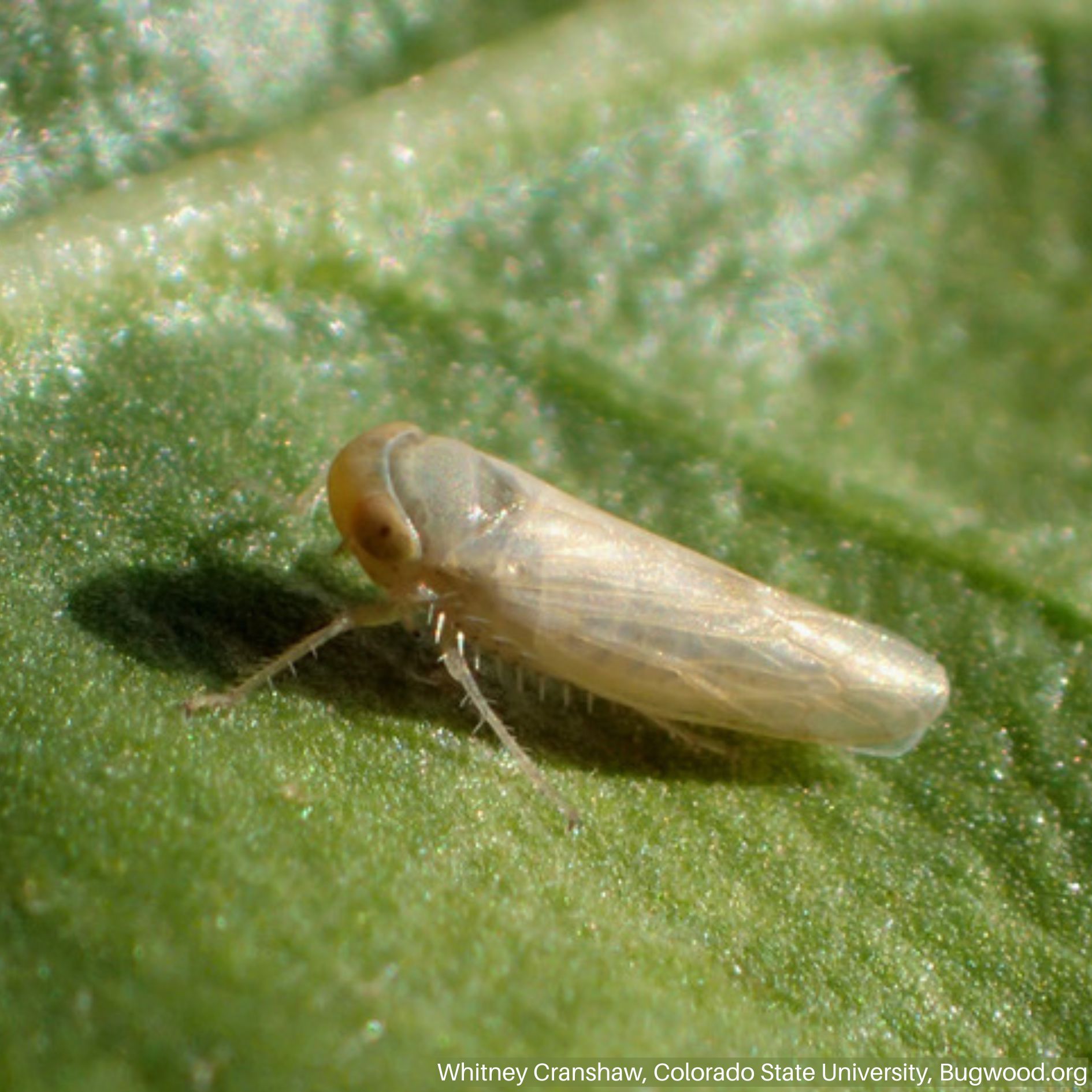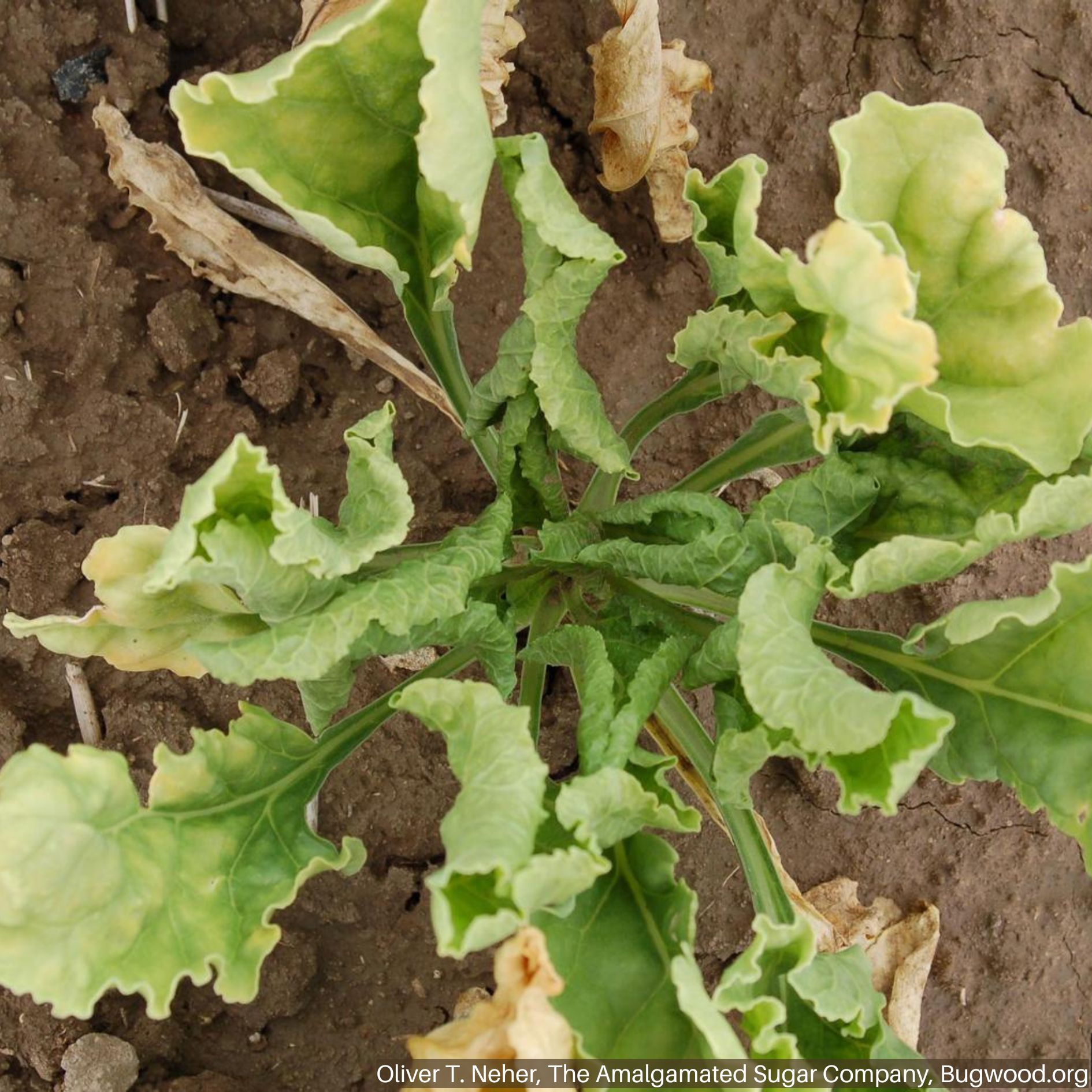Beet Curly Top Virus
 Symptoms of BCTV on bean plant.
Symptoms of BCTV on bean plant.
 BCTV infected tomato plants will often exhibit purple, enlarged veins.
BCTV infected tomato plants will often exhibit purple, enlarged veins.
VEGETABLE HOSTS
- Bean
- Beet
- Cucurbits
- Pepper
- Spinach
- Tomato
- Several other wild and economic hosts
DESCRIPTION
Beet Curly Top Virus (BCTV) is taxonomically a Curtovirus in the Geminiviridae family of plant pathogenic viruses. It is vectored, or carried by the beet leafhopper (BLH) insect. BCTV causes curly top of tomato, a common disease in Utah and the western U.S. Both the virus and the BLH have a wide range of hosts so this disease affects a number of plant species. Although tomato plants are not desired hosts, the BLH will feed on tomato plants as other host plants become dried in the summer heat of Utah.
BIOLOGY
The BLH has a piercing-sucking feeding habit. An infected BLH needs only to feed for one minute on an uninfected plant to transmit the virus. BLHs that have acquired BCTV can transmit the virus for the remainder of their life; however, the number of plants infected decreases when the insects are not continually or frequently feeding on infected plants.
A tomato plant can begin to show symptoms about 7-14 days after infection. Sugar beet is a common host and may serve as a virus reservoir. Tomato is not a desired host for the BLH, but the insects will remain in tomato fields long enough to transmit the virus while feeding. The edges of fields or isolated plants with a lot of soil around them are more susceptible to BLH feeding, which can result in high infection rates in these areas.
SYMPTOMS
- Young plants infected with BCTV usually die.
- Plants infected at a later stage may survive but will be yellow and stunted.
- Leaves will become thicker and crisp and will roll upwards as the petioles of the leaf roll downwards.
- Dull yellow colored leaves with purple colored veins.
- Prematurely ripened fruit that are dull and wrinkled.
- Calyx tissues will often be abnormally large and thick.
- Both normal and affected fruit may be visible on the same stem if plants are infected after fruit set.
- Infected plants are usually scattered in a field.
- Infected plants will not recover and will die or remain stunted without additional flowering and setting more fruit.
GENERAL MANAGEMENT
The sporadic nature of BCTV occurrence makes it very difficult to implement practical management strategies for this disease.- Implement shading on crops as BLH prefer to feed on plants in the sun.
- Use row covers to exclude BLH from crops.
- Double plant to minimize the loss caused by BCTV.
- Manage weeds as they can serve as alternative hosts for BLH and virus reservoirs.
Use IPM practices to control BLH and BCTV as the use of chemicals to control BLH is not recommended in most situations. Locating the BLH overwintering areas would be excessively difficult and costly. BLHs can also migrate long distances, making the use of chemicals for control in specific fields ineffective and thus, futile.



